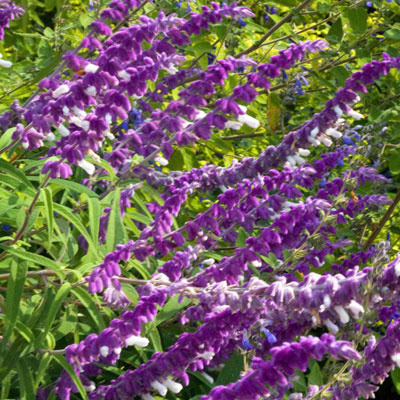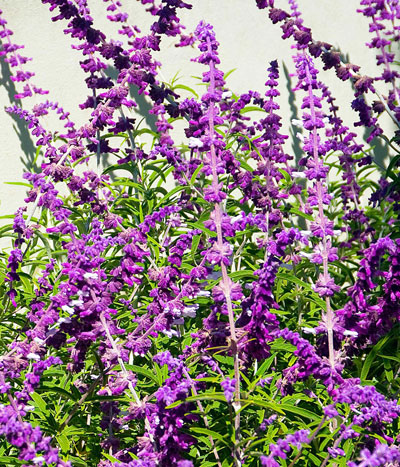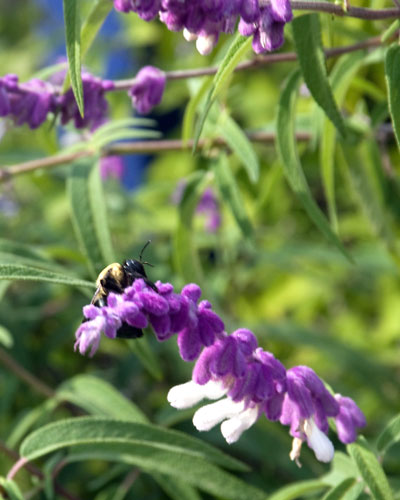Plant of the Week: September 15, 2016
First given its big push by Texas Extension horticulturists and growers in the 1990s, Mexican bush sage has become a staple. It’s not really a “bush” per se, but it attains shrub-like proportions, especially in South Texas.

Grow Mexican bush sage alongside compatible purples such as purple fountaingrass, purpleheart and purple ornamental sweet potatoes, then contrast it against bright yellows for a dazzling show.
When I came to Dallas County with the Extension Service way back in 1970, I inherited a file of old photos for slide talks. The photo that still sticks out in my mind was one of this plant. It was a dreadful old slide of a weedy-looking plant I’d never seen. The photo was age-faded (not just under-exposed), as if it had been taken 30 years earlier. I couldn’t figure out why anyone would want either the slide, or for that matter, the plant.

3- to 5-foot tall plants with rich purple spikes are extremely showy in the fall garden.
Jump ahead about 15 years and the nursery industry started to buzz about this great group of new annuals and especially perennials. They were the salvias, and many of them were native to Texas. Right in there among them was Salvia leucantha, Mexican bush sage. And this time it was looking spectacular. Seeing it in real life at the Antique Rose Emporium, the Dallas Arboretum and elsewhere, I soon knew it was something quite special. It’s been a part of fine Texas landscapes ever since.

Photo: This plant is a magnet for bees, hummingbirds and even migrating Monarch butterflies. You’ll love the beauty it brings to your garden.
Stat Sheet:
Scientific name: Salvia leucantha
Common name: Mexican bush sage
Annual/Perennial: Perennial
USDA Hardiness Rating: Zones 8-10
Native range: Mexico and Central America
Mature height: 4 to 6 ft.*
Mature width: 4 ft.
Sun requirements: Full or almost full sun
Soil requirements: Rich, moist and reasonably fertile
Special features: Unusual color for fall flowers; drought-tolerant; deer-resistant; relatively pest-free; very attractive to hummingbirds, butterflies and bees.
Special needs: To keep plants compact, tip-prune them in late May to force them to branch.
How propagated: Stem cuttings or division.
Best uses: Tall “thriller” plant for large container plantings; background flower in broad perennial garden; as individual clump among other fall perennials.
* Dwarf variety ‘Santa Barbara’ was selected because it stays at 24 to 28 inches in height.
If you love salvias, you’ll want to see the story written by Tony Avent, one of America’s most respected plant people. He owns and operates Plant Delights Nursery in North Carolina. They are a source of tons of unusual perennials, salvias included.
• Here is Tony’s story on the huge clan of salvias.
• And here is a link to the Plant Delights website.
